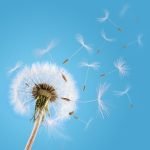Botanicals for Emotional Illnesses
Perspective From My Studies in Peru
Jillian Stansbury, ND
This article is a bit “out of the box.” As some readers may be aware, I have been living in Peru for 6 months a year for the past 5 years, studying shamanism and ethnobotany with several indigenous Amazonian tribes. Their ideas about mental and emotional illness are so strikingly different from the Western paradigm that it makes for a stimulating discussion. This article aims to explore the shamanic approaches used in the Andes and Amazon to treat mental-emotional disorders.
Shamanism as an Alternative to the Psychoanalytic Process
Unlike the psychoanalytic “talk therapy” typical in the West, in some shamanic traditions it is thought that words are weak and ineffective and, even worse, may impede the healing process. Words may interfere with the flow of energy between a person and the spirit realm, and other forms of direct nonverbal communication are thought to be superior. With words, we indulge in emotions that harmful spirits or entities feed on. Psychotherapy is purported to help a person learn new emotional responses and reshape his or her entire emotional landscape via a series of talking-counseling sessions, often long term. Ayahuasca, an entheogenic brew of the Amazon, is believed to accomplish a similar restructuring of a person’s spirit in a short time compared with the often slow and slogging cognitive therapeutic process. It has been said that one ayahuasca session can equal 10 years of counseling.
Most people recognize that some of our most powerful emotional responses are nonverbally, nonintellectually cued. Seeing something of great beauty, petting our cats or dogs, listening to music that moves us, or making love, for example, tends to evoke more powerful feelings then anything we may think, read, or discuss. In Western culture, verbal communication is highly prized and often goes hand in hand with success. These verbal talents are less valued in many tribal communities; in fact, those who talk too much and work too little are less valuable to the village. It follows that talk therapy is regarded as a weak and silly approach. Taking synthetic drugs to soothe one’s psyche is not regarded any more highly because anything that weakens or burdens the physical body can only lead to more psychic disturbance.
A Shamanic Approach to Psychological Ailments
In Peruvian shamanism, psychological disturbances are not thought of as character flaws or emotional weaknesses but rather as external entities that have invaded and taken over one’s character. Therapies may be aimed at cleansing the body and banishing external influences with purgas (purges), dietas (diets), and limpiezas (cleanses). Aggressiveness, laziness, greed, fear, anxiety, depression, and confusion, for example, are often seen as a corruption of the spirit due to external pernicious influences that are feeding on a person’s energy. Therefore, to rid oneself of these corrupting influences, individuals do not go to a psychiatrist to medicate them away or to a psychologist to talk them away but go to a shaman or healer to throw off the external entity and cleanse or purify the body. These corrupting entities have specific names, such as susto (the psychic disturbance that follows a bad fright or witnessing a violent event) or mal de ojo (evil eye, the emotional turmoil that can invade when a powerful person looks at you with intensity, whether in malice or not). Tristeza is a deep sadness, which should be treated as soon as it is recognized, lest the person should withdraw from the world and die shortly thereafter. There are specific plants whose energies and spirits can enter a person and cure these diseases.
Disease as Due to the Presence of Evil Spirits
Shakuntala Modi, MD, a psychiatrist in the United States, has an unusual approach to psychotherapy. In her book Remarkable Healings: A Psychiatrist Discovers Unsuspected Roots of Mental and Physical Illness (Hampton Roads Publishing Company, Inc), she reports that under hypnosis most individuals could be made aware of missing pieces of their souls and the presence of spirits and dark entities, some deceased humans and other more evil nonhuman entities. Most of these individuals experienced physical symptoms in the precise spots in their bodies where the entities dwelled. Her book details how clearing these entities and restoring lost soul pieces resulted in improvements in headaches, neck pain, back pain, panic attacks, insomnia, and many other ailments. This is precisely what many of the shamanistic and animistic tribes of the Amazon believe. The use of many plants, hallucinogens, baths, blowing of tobacco, and other practices is aimed at ridding the body of negative energy that entities feed on, as well as the entities themselves.
The Concept of Spiritual Attack
Many healers and shamans with whom I have studied believe that there are a myriad of external entities present in the world around us, all hungry to feed on a susceptible person’s energy. It is thought that indulging in anger, for example, encourages entities that feed on anger to invade and thoroughly corrupt and command your spirit. Similarly, indulging in fear invites entities that feed on fear to establish themselves in one’s energy body and start to take over one’s awareness. Individuals may feel that the emotion is their own—their fear, their anger, or their depression, for example—when it is actually a foreign entity. It is thought that, when people are not paying attention and are unaware of their body and emotions, it is easy for foreign entities to enter and take control of one’s feelings and emotional landscape. Taking drugs and drinking to access may so weaken one’s consciousness and guard that it is easy for entities to enter the body and take over, and this is thought to be a reason why drug addicts have so many psychological problems. North American indigenous philosophy on disease includes the concept of “ghost sickness.” It is contended that, when people commit such heinous crimes that we are driven to stupefaction about how a human being could do such a thing, then it must be concluded that these ax murderers are actually no longer human. They are mere ghosts, and evil spirits have taken over their bodies and minds. There are many plant-based therapies to address spiritual attack. For example, I have been taught about specific plants to rub on myself should I have to go out into the jungle alone at night and thereby be subject to attack by jungle spirits, as well as about other plants for when these spirits are showing up in your dreams, causing nightmares.
Alternative Therapies for Psychic Disturbances
Part of the ancient use of ayahuasca was for the purpose of gaining power over enemies and evil spirits. Some shamans engage in supernatural battles, banishing demons as their presence becomes known under the influence of the mystical brew. The ingestion of ayahuasca also typically involves a good deal of vomiting and purging, and this too is thought to help remove heavy energies that entities may be feeding on. The Solanaceae family tropane alkaloid plants of South America are many and are also used for spiritual purposes, to help a struggling soul when stuck in negative emotions. Although the Solanaceae plants Datura and Brugmansia are extremely dangerous and even potentially lethal, in experienced hands they are other commonly used tools in the Andes and Amazon. The San Pedro cactus (Trichnocerus pachanoi) is another entheogen used to help break through the illusions, banish negative entities, and give a person new insights into how to live his or her life. These plants are referred to as planta maestras, plant teachers. They are certainly not thought of as drugs but rather are believed to be spirits of these plants can enter our mind and offer us lessons.
Not all planta maestras are hallucinogens. Many are healing spirits that are “dieted” by ingesting them daily and avoiding salt, alcohol, coffee, sugar, and sex, which make such strong impressions on our senses that we might not be able to perceive the subtle lessons that are being offered by the planta maestra. Dieting a plant is somewhat like forming a lifelong relationship. Like a strong friendship where you simply pick up the phone and instantly receive some emotional support, you may also simply call on the spirit of a plant, and it will come to your aid, offering you its strengths and tackling your weaknesses. Once you have dieted a plant, you may not require its physical presence but can simply call on its spirit when needed.
Floral and Herbal Baths
In addition to the ingestion of planta maestras, another method of energetic healing with plants involves producing large quantities of herbal waters sufficient to bathe in or at least splash over the whole body. The spirit of the plant enters the water and can be used to balance the energetic body. This method of healing, referred to as baños, is especially helpful for spiritual disorders and soul pain. Very bad shocks to the emotional body can disrupt the energy body and cause it to weaken or detach altogether from the physical body. Because children are especially debilitated by emotional stresses, bathing is particularly good for their tantrums and moods. However, adults (especially those with anxiety, depression, and weak nervous systems) may also benefit from herbal bathing. There are floral baths for spiritual diseases, anxiety, jealousy, shocks, and many other emotional disorders. Floral baths are prepared by placing flowers and small buds still on the various stalks and branches in a bucket of water. The water is not typically hot, and users are not aiming to infuse the herbs. Rather, the water is thought to absorb the energy or vibration of the plants. For many healers, the particular plants chosen are only somewhat important because almost any beautiful, clean healthy bud or blossom will do the trick. Some users will go in search of whatever is most beautiful and in a state of perfection rather than seek a specific plant. The water is then poured over the head or splashed over the body.
Bathing in sacred waters is also used to purify the spirit because the water is thought to be able to absorb negative energies and even evil and enemy influences. Sacred lakes and rivers may impart some of their own pure and powerful energies to a bather and help cleanse away heavy energies and strengthen the spirit.
After bathing, amulets and power objects may exert their effects more readily. Many healers will recommend floral baths 2 to 3 times a week. For more serious illness, a person may be bathed by the healer as part of a more extensive therapy aimed at cleansing, banishing evil spirits, or breaking hexes. Many shamans also put floral waters in their mouths to spew over a patient to help purify him or her. Tobacco smoke is similarly thought to help loosen negative or heavy energies and dark or evil spirits that have attached to a person.
Molecular Meets Mystical
Is there any way for the rational mind to find validity in all this? If all matter is really trapped energy, could it be that the unique character of the energy is an aspect of the plant’s spirit? While everyone agrees that plants are alive, there is long-standing suppression of the notion that plants have souls or spirits of their own. Many of the strictest atheistic scientists will not even broach the subject of humans’ having a soul, leaving the topic to the ranks of religion, although all scientists “believe” that the cosmos is teeming with nonmaterial energies. Humans and plants are part of the same biological and evolutionary continuum, but you may be chastised as unscientific if you voice the least musing that perhaps plants have spirits. If plants are a form of life, are they somehow less alive than ourselves? I think not.
Jillian Stansbury, ND has practiced in southwest Washington State for almost 20 years, specializing in women’s health, mental health, and chronic disease. She holds undergraduate degrees in medical illustration and medical assisting and graduated with honors in both programs. Dr Stansbury also chaired the botanical medicine program at National College of Natural Medicine, Portland, Oregon, and has taught the core botanical curricula for more than 20 years. In addition, Dr Stansbury writes and serves as a medical editor for numerous professional journals and lay publications, plus teaches natural products chemistry and herbal medicine around the country. At present, she is working to set up a humanitarian service organization in Peru, leads ethnobotany trips there, and is studying South American ethnobotany. She is the mother of 2 adult children, and her hobbies include art, music, gardening, camping, international travel, and studying quantum and metaphysics. She can be contacted at [email protected].










